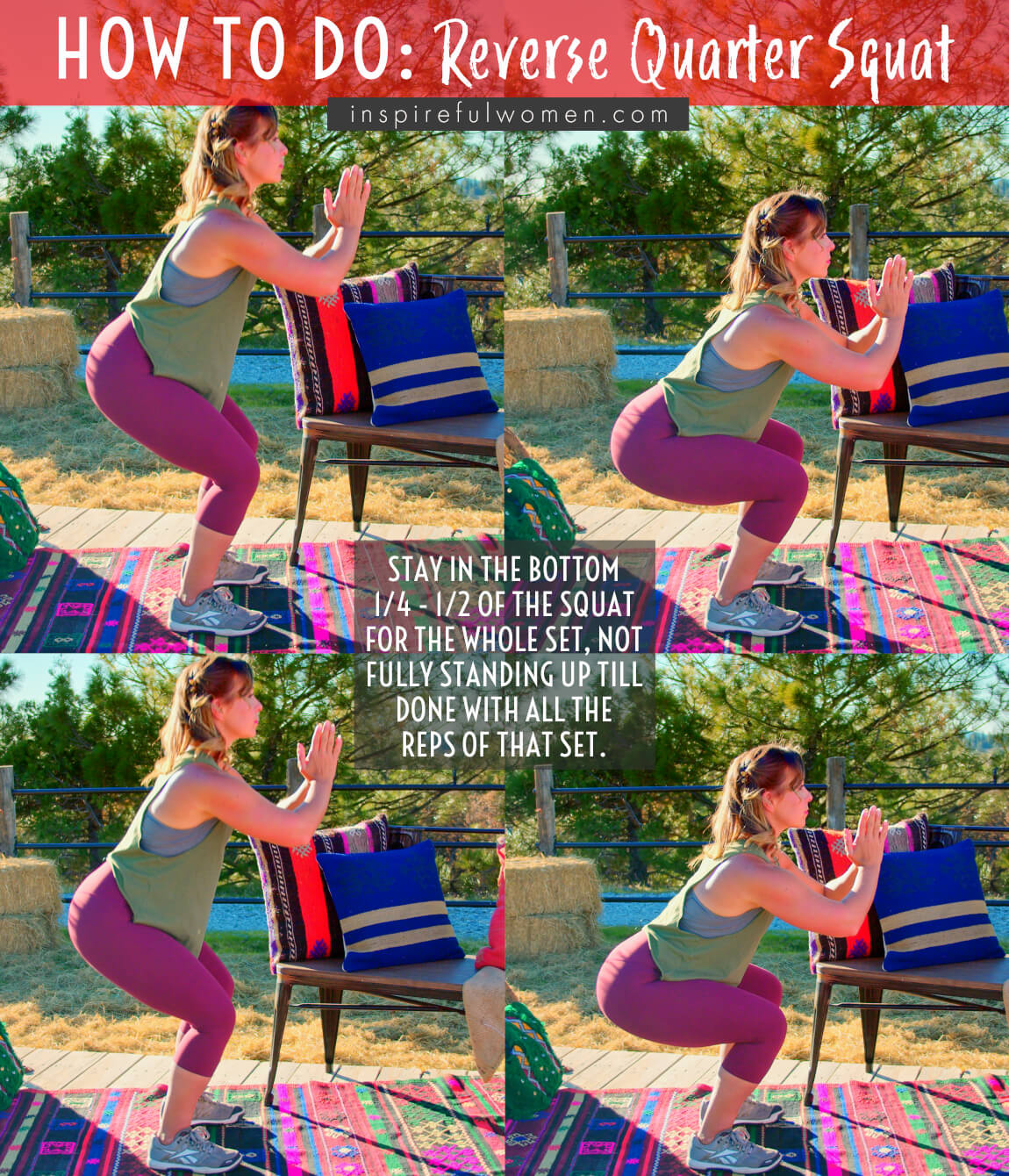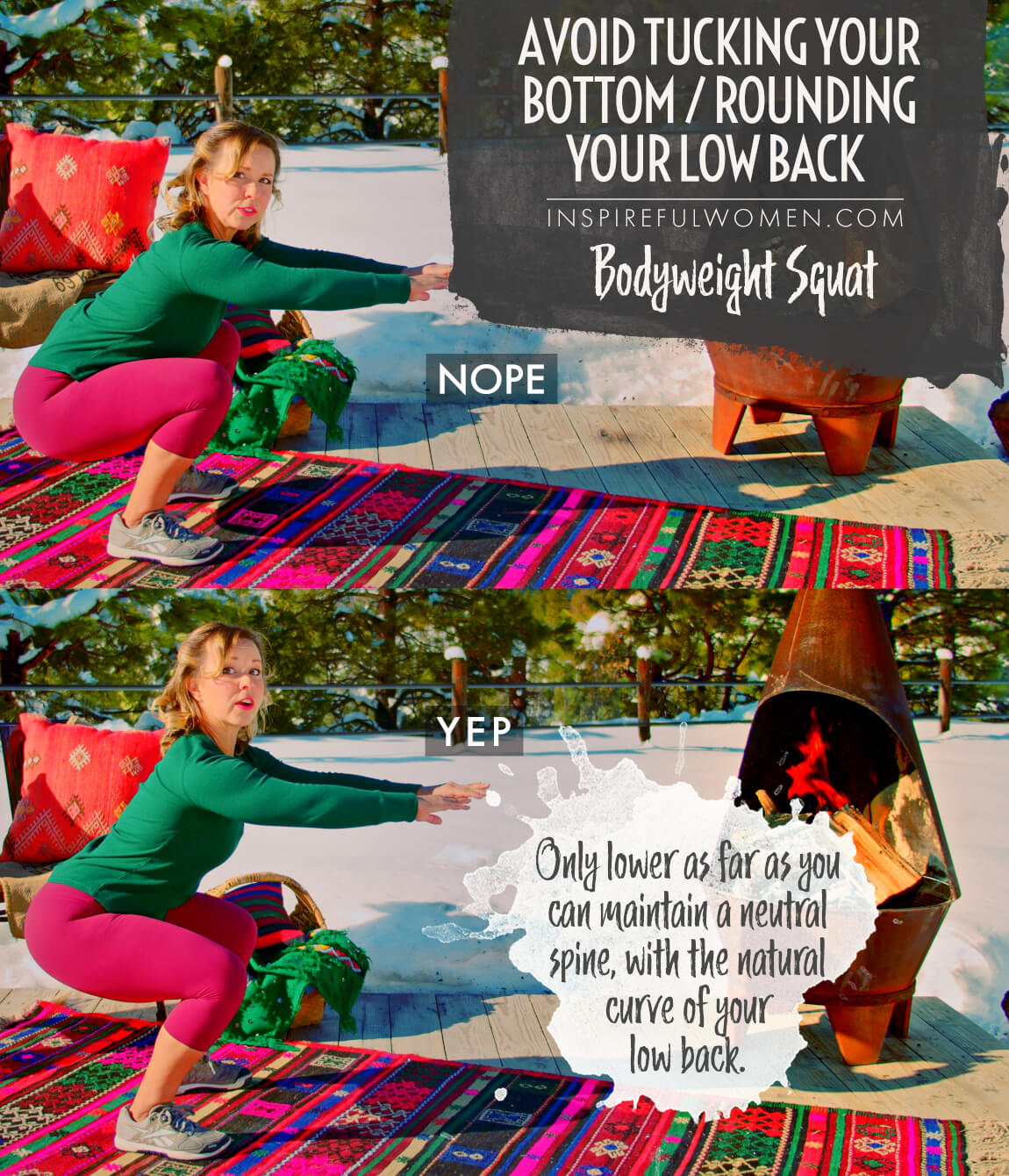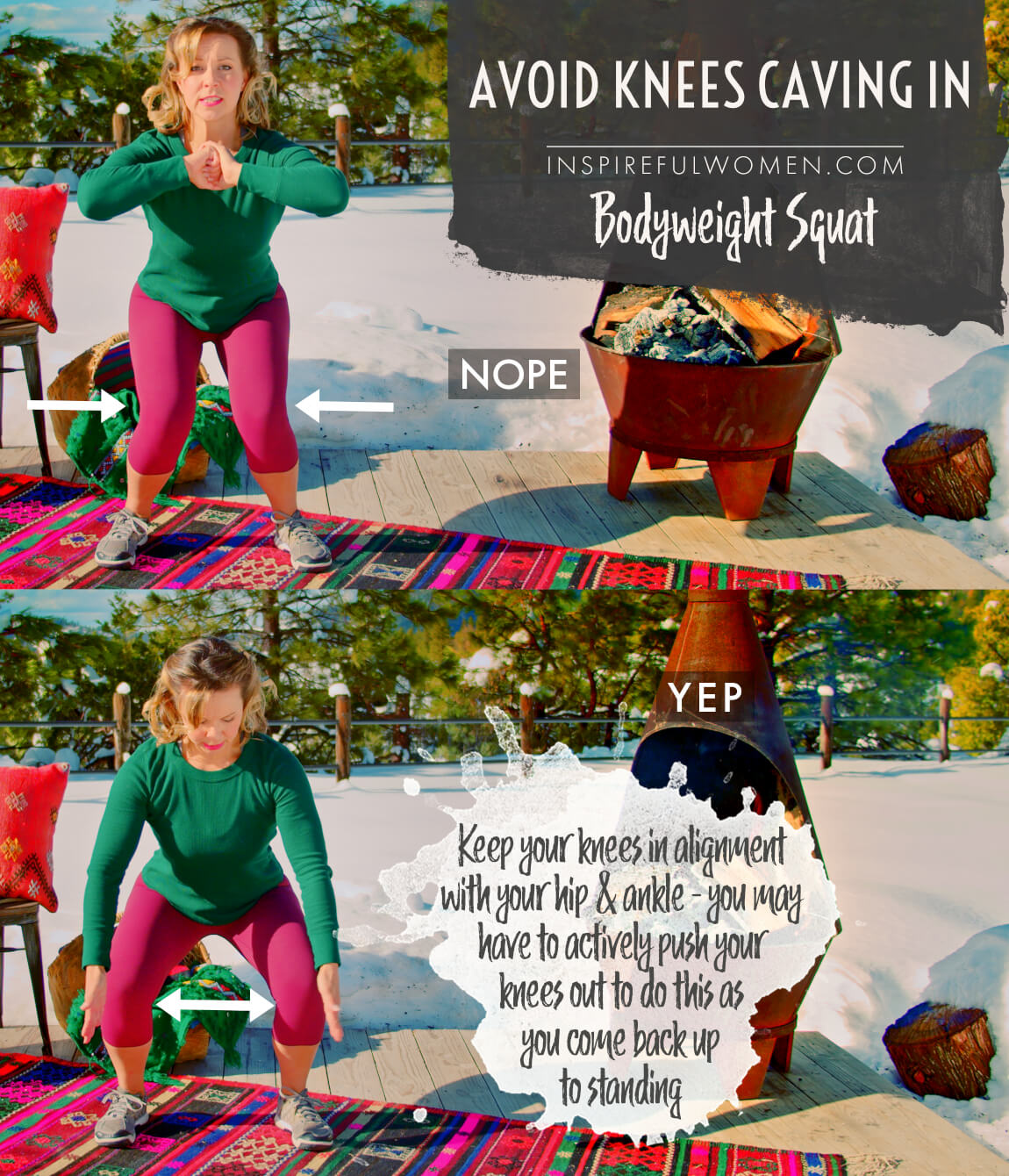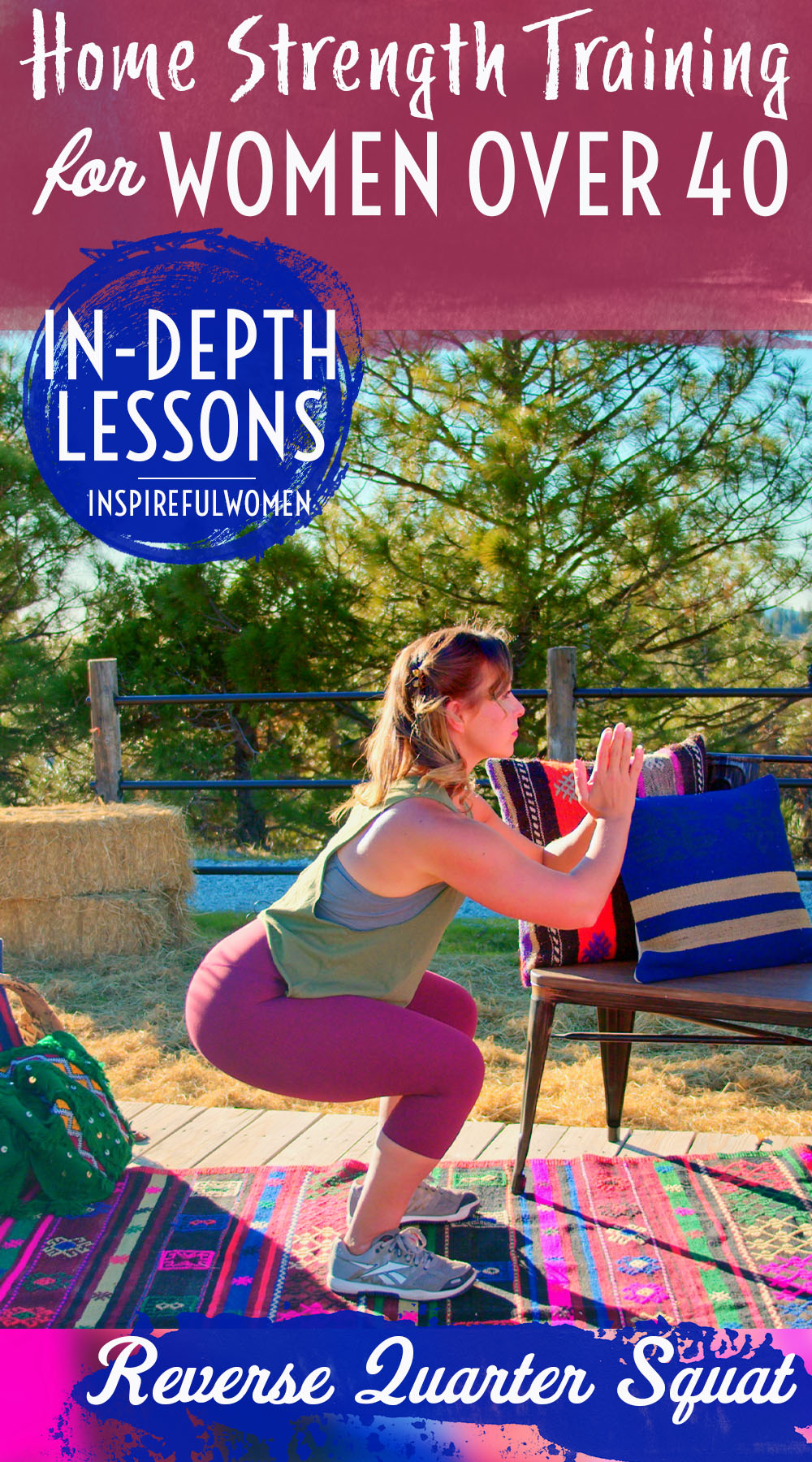Bodyweight Reverse Quarter Squat
How to Do the Bodyweight Squat Variation: Reverse Quarter Squat | In-Depth Guide [VISUAL LEARNERS] Beginner
Proper Form & Common Mistakes | Home Resistance Training
WHAT DO YOU WANT TO SEE?
QUICK DEMO
QUICK DEMO
MUSCLES THIS WORKS
MUSCLES
MAIN MUSCLES WORKED IN the Reverse Quarter Squat
QUADRICEPS & GLUTEUS MAXIMUS
OTHER MUSCLES WORKED:
- Gastroc/soleus
- Hamstrings
- Erector spinae
STARTING POINTERS
Starting Pointers
WHAT WE'RE DOING TODAY
Other names for this exercise: Partial squat
The Reverse Quarter Squat is a unique variation of the traditional squat that specifically targets your quadriceps, hamstrings, and glutes. You can strengthen your lower body and improve your squatting form.
This advanced version of the squat is pretty hard on the quads. It is a good exercise for fully fatiguing the muscle. The movement works the quads through a small range of movement, in the range where the load on them is the greatest. The reverse quarter squat begins with a partial squat, lowering down until the thighs are parallel to the floor. This is your stopping point. Pushing down into the floor, straighten the knees to rise up only halfway - you will be halfway between the thighs being parallel to the floor and fully straight. That completes one rep. Continue working in this partial range of motion for the entire set, never fully straightening back up until you are done. Keeping some bend in the knees will keep the quadricep muscles under tension for the entire set.
One drawback of this version of the squat is that it only works the muscles and joints through a fairly small range of motion. It would be beneficial to do other exercises to work through a larger range of motion. In other words, this exercise should not be the only movement used to strengthen the quadriceps muscles. Choosing different exercises within the week will be more beneficial than doing the same movement every time.
HOW TO DO THE EXERCISE
LOOKS
HOW Reverse Quarter SquatS SHAPE OUR BODY
Firm and shapely thighs and buttocks.
PROPER FORM
PROPER FORM: Reverse Quarter Squats
EQUIPMENT, SETS & REPS
EQUIPMENT
None
SUGGESTED STARTING WEIGHT FOR WOMEN:
Bodyweight
SETS & REPS:
2 sets of 8 reps - stop when you cannot maintain good form.
PACE:
Quick up and slower down.
BODY POSITION
BODY POSITION FOR THE Reverse Quarter Squat
FEET: Hip width or slightly wider, parallel, toes pointed forward. *If you have pinching in the front of your hip go ahead and point your toes out to a position where there is no pinching.
BODY STANCE: Neutral spine (includes neck) core muscles gently engaged.
ARMS: Across your chest or held out in front of you to help counterbalance.
HOW TO DO
HOW TO DO Reverse Quarter SquatS
CUE: Keep your sternum lifted.
Keep your spine in neutral as you lower your body down.
Activate your hip flexors by actively pulling your body down into the squat.
Bend at your hips, knees, and ankles to lower down.
Your shoulders will be about over your midfoot/ankle in the bottom position. Your knees inline with your toes.
Lower down until your thighs are parallel to the floor.
Push back up, stopping about halfway between the point where your thighs are parallel to the floor and being all the way straight.
Lower back down until your thighs are parallel to the floor.
Continue working through this range to complete all of the reps.
At the end of the reps push up through the bottom of your feet to stand for a break between sets.
The path of your shoulders, viewed from the side, should ideally always be headed straight down, or where your shoulders stay in line with your midfoot, or towards the ball, but not past the ball of your foot or toes- at this point your center of gravity has moved too far forward.

COMMON MISTAKES
COMMON MISTAKES
WHAT TO AVOID WITH THE Reverse Quarter Squat
KEY TIP:
Guess what? Good news! Many avoids are the same for most movements. Once you learn the basics, there's really only a few extra avoids for each individual movement.
1. Avoid Rounding Low Back
AVOID: Rounding your back or "tucking your tail"
WHY NOT?
- This is the most common mistake made, in an attempt to go deeper into the squat the tailbone is tucked under.
- This can lead to increased pressure on the spine, and lead to injury or damage over time.
- Tucking the tail, and rounding the low back defeats the purpose of going deeper into the squat.
- The goal for going deeper is to strengthen the core and increase the range of motion of the hips and ankles.
- Tucking the pelvis under does not increase the hip or ankle range of motion.
WHAT TO DO:
- Keep your spine from head to tailbone in neutral throughout the movement.
- Keep your shoulders back and sternum lifted.

2. Avoid Shifting Weight Forward To Toes
AVOID: Shifting the weight forward/rolling up onto the balls of the feet.
WHY NOT?
- This shifts your center of gravity forward and increases the forces on the front of the knee.
- It can also cause you to round your back.
WHAT TO DO:
- Keep your heels down- you should feel the entire ball of the foot and heel on the floor (the arch is lifted).
- If you cannot keep the heel down:
- Work on increasing the flexibility of your ankle joint. In half-kneeling, the front foot flat on floor, shift the body weight forward to bend at the ankle. You should be able to get the knee about 4 inches past the toes. If not, go to where it feels tight and pulse forward a few times and then hold for 5 seconds when the ankle is most bent. Repeat 5 times.
-
- Stretch your calf muscles (both the gastrocnemius and the soleus). Stand facing the wall, put one foot forward, toes touching the wall, knee bent slightly, hands on the wall. Other leg back about 12 inches (behind heel of front foot), heel down, toes facing forward (not toeing out). Bend elbows to lean forward, keeping the heel of the back foot down. You should feel a stretch in the calf of your back leg. Hold for 30 seconds and repeat 2 times. Bend the back knee and repeat - keep heel down, feel stretch lower down on calf, hold for 30 seconds and repeat 2 times.
-
- Add shin raises to your workout to improve your active ankle range of motion (joint range of motion and muscle strength.
- Think of pushing your bottom behind your heels as you lower down, as opposed to pushing your knees forwards.
- Limit how far you squat down - only squat as low as you are able to maintain good form.

3. Avoid Knee Alignment
AVOID: Letting your knees collapse in - during any part of the movement.
WHY NOT?
- The knee joint should be in a line with the toes, shin and thigh.
WHAT TO DO:
- Pay attention to this alignment on the way down and on the way up.
- This requires activation of the gluteus medius muscles to hold the thighs out.

4. Avoid Dropping Down
AVOID: Just passively dropping down.
WHY NOT?
- This can cause pain to your knee joints.
WHAT TO DO:
- Engage your front hip flexors muscles to control your lowering. This will help stabilize your torso and stay upright.
5. Avoid Too Much Too Soon
AVOID: Doing too much too soon.
WHY NOT?
- Squats are a challenging exercise that can cause knee pain if you progress the exercise too quickly, this includes:
- Using too much resistance
- Doing too many reps.
- Trying to go too deep when you don’t have the strength or flexibility yet.
WHAT TO DO:
- Start slowly, do one set of 8 and see how you feel the next day.
- If the squats caused pain, the next time, review your form and try doing only 4 reps.
- Increase by 2 reps each time you do squats.
- If the squats caused pain, the next time, review your form and try doing only 4 reps.
6. Avoid Torso Moving Down
AVOID: Torso leaning too far over.
WHAT TO DO:
- Keep your sternum lifted, chest open.
- Keep your spine from head to tailbone in neutral throughout the movement.

WHAT WE'RE DOING TODAY
WHAT & WHY
BENEFITS OF TRAINING THE QUADRICEPS & GLUTEUS MAXIMUS
WHAT
We can choose how we squat based on a variety of goals.
Squats can be done in many different ways. Squats can be done without any additional equipment, using only body weight for resistance. It is always good to think about your personal goals for the exercise before choosing which version of squat you want to do.
PURPOSE OF BODYWEIGHT:
Bodyweight squats can be used to develop good form, at least in the beginning. It is fine to add some resistance once you have perfected your form. Additionally, when squatting at a slower pace, you can still build muscle using only your bodyweight as well.
DEPTH OF SQUAT:
One of the biggest questions about how to do squats is - how low do you go? This depends on your goals for the movement. The quadriceps muscles - the big muscle on the front of the thigh, will be most active when your thighs are parallel to the floor. If your goal is bigger, stronger thigh muscles, stopping when the thighs are parallel to the floor would be a good option.
Squats are also very good for improving daily function - for example, getting up and down for gardening, getting items from the lower cupboard, and getting up and down from the floor. This requires strength through the whole range of motion and also enough movement at the ankles, hips, and knees. If this is your goal, you can lower down as far as you are able while maintaining good form.
EVEN SHALLOW SQUATS ARE GREAT
If you can't squat that low, however, you will still experience benefits!
Think about things like walking upstairs, hiking, or walking uphill - these activities actually use the quad muscles more in a shallow range, so a shallow squat will still improve your muscle strength & ability for these sorts of activities!
POINTERS FOR GOOD SQUAT FORM:
No matter what your goals are for the squat, the limiting factors are the same - you must be able to do the movement with good form. What is good form?
Try to keep the upper body parallel with the shin (tibia) - towards being vertical. Both the torso and lower leg will angle forward somewhat. How far forward will depend on your strength, leg length (thigh bone vs lower leg bones), and how deep you squat. Why we keep the torso & shin parallel with each other: In order to get the range of motion from the right joints, and work the targeted muscles.
It’s okay for the torso to lean forward to some degree- I used to feel like I was a squats failure because they’d say to try to stay upright and I’d be like, ‘I fall over if I do that! I must be a loser.’ So some forward lean will be natural- especially with a bodyweight squat when you don’t have any added weight to help counterbalance you from falling Backward. At the same time, if you let your upper body & knees move TOO far forward, your weight will be shifted forward putting more strain in the joint between the kneecap and the thigh bone (patellofemoral joint - one of the joints in the knee), and you will not be getting the benefit of the movement which is to move through the ankle, hip, and thoracic spine, work the quads and hip extensors and strengthen the core muscles. So you can see we’re missing the point in that case.
Here are a few tips to help you keep the torso more upright:
- PULLING BODY DOWN - Think about pulling your body down as opposed to letting gravity lower you towards the floor. Using the iliopsoas - one of the hip flexors that attaches to the lumbar spine and runs through the pelvic cavity to attach to the thigh bone, increases the stability of the core as you squat.
- CHEST LIFTED - Keep the sternum lifted and the shoulder blades back to keep the upper body back over the midfoot as you squat.
- CORE ENGAGED: Gently engage the core muscles, and if you can engage the pelvic floor it will help.
- LENGTHEN SPINE: Think about lengthening your spine and something holding your head up as you fold at the hips, knees, and ankles - as if you were folding straight down a line on an accordion. The spine should stay long and not collapse as you squat.
- HOLD ARMS OUT: Hold your arms straight out in front to help counterbalance.
- NECK NEUTRAL: Keep your neck in neutral, avoid looking down which may pull your shoulders forward.
- Think of lowering your bottom down between and towards the back of the heels.
- WEIGHT OFF TOES: The heels stay down but you should not have weight on the toes. If you draw a line down through your shoulder it should be about over your midfoot.
- KNEES ARE ALIGNED OVER FEET - the front of the knee will move forward towards the toes, but it should not be collapsing in or leaning out. The hips and ankles have to bend. When the hips and knees bend, the knees will travel forward. The knees will move forward as the lower leg angles forward. How far forward the knees travel forward will depend on the length of your thigh bone and lower leg bones, and how deep you squat. There should be no pressure or discomfort at the front of the knee - this is very important to avoid aggravating the patellofemoral joints.
- FEET FLAT: Feet are flat on the floor (not rolling up to toes, or to the inside or outside of the foot) and toes pointing forward - this will improve the movement in the ankles and use the calf muscles more.
- WEIGHT ON BALL & HEEL OF FOOT: You should feel both sides of the ball of the foot (on the inside and outside) and the heel of the foot firmly planted to provide a very stable base for you to work on.
- The squat should feel very stable and controlled. If you feel like you cannot keep good form, try holding a weight in front of you or not squatting down too far, or any of the versions of the squats that are assisted. Trying to go lower with poor form is exactly what led to people thinking squats cause knee or back pain and should be avoided. Squats are really good for you when they are done correctly.
Keeping the small curve in the low back as you squat down can be hard for a lot of people. It may be helpful to actively pull yourself down at the beginning of the squat. One of the hip flexors (iliopsoas) is attached to the low back (the lumbar part of the spine). Activating these muscles can make it easier to hold the low back in a neutral position.
The exercise is designed to move through the hip, knee, and ankle joints. There is no benefit to it the squats down lower by moving through the back, so only go as low as you can maintain a still spine.
WHY BOTHER DOING IT?
WHY
WHY DO WE EVEN CARE?
We are finally here at squats. I’ve put this off as long as I could. Lol. I think we all know that squats are important, but let’s face it - they lost their appeal and novelty about 25 years ago when we were still doing home workouts with a VHS tape we rented from the local library while wearing pink spandex one-pieces and a sweatband to complete the look. For me personally, we can add oversized glasses to the picture & you can visualize the epitome of true fashion of the late '80s/early '90s.
SQUATS TRAIN OUR BIGGEST LEG MUSCLES.
Yes, squats are important. I have taught a bunch of other exercises that work some of these same muscles that are less known & therefore for many of us a bit more interesting just because it’s something different. But you knew this was coming. Squats are very very functional & important to our training. They involve bending & movement at 3 joints - hips, knees & ankles. More on why this is great in a moment.
Squats should be a staple in the lower body workout. Squats target some of the biggest leg muscles and have the added bonus of strengthening the core and improving the mobility of the ankles, hips, and thoracic spine. Increasing the strength of the lower body and core will help to lift more weight with the upper body by providing a strong and stable base to work from.
WHY SQUATS IMPROVE OUR EVERYDAY FUNCTIONING:
The squat is often used as a measure of functional ability - if you can squat down with good form and control then you have good ankle, hip, knee, and upper back movement and good core strength and control.
With age we tend to lose mobility in the ankles and hips - they get stiffer. When those joints get stiffer, it changes the way that we move. We begin to use our low backs more and our legs less. Over time this leads to backs that move too much and weaker legs. Slowly there can be a trend towards taking smaller steps when walking, not wanting to get down on the floor, using the hands to get up from the floor, and using gravity and the arms to help get out of chairs and up the stairs. Adding squats to your workout can help prevent this from happening.
MOVING AT LOTS OF JOINTS MAKES THESE JOINTS & MUSCLES MOBILE & HEALTHY
Essentially there is a lot of movement at a number of important joints here- hips, knees & ankles, & training will help keep our joint range of motion healthy & improve loss of range in these areas as well. Our ability to move our joints through their full range, & under some sort of load, has a big bearing on how capable we feel doing activities in our everyday life.
EVERYDAY LIFE
EVERYDAY LIFE &
MUSCLE FUNCTION
HOW WE USE OUR QUADS AND GLUTES IN EVERYDAY LIFE
1. THE QUADRICEPS AND GLUTEUS MAXIMUS MUSCLES WORK TOGETHER IN ACTIVITIES THAT INVOLVE STRAIGHTENING THE KNEE AND THE HIP AT THE SAME TIME.
- Jumping
- Climbing
- Going up and down stairs
- Transitioning sit to stand to sit
- Sitting in chairs
- In and out of cars
- On and off of a toilet
- Squatting down/getting up
- Getting things out of the bottom shelf
- Getting up and down from the floor
- Gardening
- Picking items or kids up
- Shock absorbers to protect the ankle, knee, and hip joints during
- Walking
- Running
- Jumping
- Stabilizes the knee joint during all activity that involves bending and straightening the knee
- Positions the kneecap in the groove of the femur during knee movement
HOW TO FEEL WHAT MUSCLE IS WORKING
How to Feel What Muscle is Working
Quadriceps: Sitting upright, place your hand on the front of your thigh (of the test leg). Hook the ankle of the other leg to hold the test leg (the leg that your hand is resting on) in place. Try to straighten the test leg by lifting the foot. You will feel your quadriceps contract.
Gluteus Maximus: Place your hands on your bottom - about where they would be if you put your hands in your back pockets - with the palms on your buttocks. Push down into both feet as if you were pressing yourself up to standing. Try to keep the front of your thighs relaxed so that the muscles under your hands contract. Try activating only one side at a time.
SCIENCY STUFF
SCIENCY STUFF
SPIFFILICIOUS FACTS ABOUT MUSCLES & MOVES
The quadriceps femoris originates from the thigh bone (femur), with one portion of it - the rectus femoris, originating from the front of the pelvic bone. All four muscles of the quadriceps (rectus femoris, vastus lateralis, vastus medialis oblique, and vastus intermedius) come together to form one large tendon (patellar tendon) which crosses the knee joint to insert on the shin bone (tibia). The kneecap is embedded in this tendon. The primary function of the quadriceps is to straighten the knee. It is also responsible for helping to stabilize the knee joint and hold and move the kneecap in the groove on the end of the femur when the knee bends and straightens.
The gluteus maximus originates on the back of the pelvic bones, the sacrum (the flat triangular bone at the end of the spine) and the tailbone, and fascia and ligaments. The muscle attaches to the thigh bone (femur) and the iliotibial band (IT band). When the muscle contracts it pulls the thigh back behind the body. This movement is relatively small - only about 15 degrees for most people.
The gluteus maximus and quadriceps work together to move the leg (hip and knee) from a bent position to a straight position.
Activating the iliopsoas to pull your body down increases the stability of the core (it originates in the lumbar spine). Exhaling as you squat will engage the muscles of the pelvic floor and diaphragm to help stabilize the core by increasing the intra-abdominal pressure (it also helps to do a Kegel). [The Valsalva maneuver (exhaling forcibly and holding) is frequently recommended by weightlifters, this is not recommended as it can stress the cardiovascular system].
ALLLL MUSCLES & WHEN
ALL MUSCLES WORKING & WHEN DURING Bodyweight Reverse Quarter Squats
In the starting position, the muscles of the core (transverse abdominis, obliques, erector spinae, multifidi, rectus abdominis) work to hold the spine in neutral. The scapular muscles are working isometrically to hold the shoulder blades together and down the back.
The iliopsoas and rectus femoris (hip flexors) act concentrically to flex the hip to pull your body down. The quadriceps and gluteus maximus work eccentrically as you lower down.
In the full squat position the gluteus maximus (hip extension) and quadriceps femoris (knee extension), gastrocnemius, and soleus (plantar flexion - pulls the tibia back) contract concentrically to push the body back up to the quarter squat position (half way between thighs being parallel to the floor and straight up). The quadriceps act eccentrically to lower back down until the thighs are parallel to the floor and then concentrically to push back up to the halfway point.
At the end of the set, the quadriceps, and gluteus maximus contract concentrically to straighten the hips and knees. The thigh adductors work to pull the thighs together, the adductor magnus also helps with hip extension. The soleus and gastroc contract concentrically to pull the tibia (shin bone) back to vertical.
PIN IT FOR LATER!


